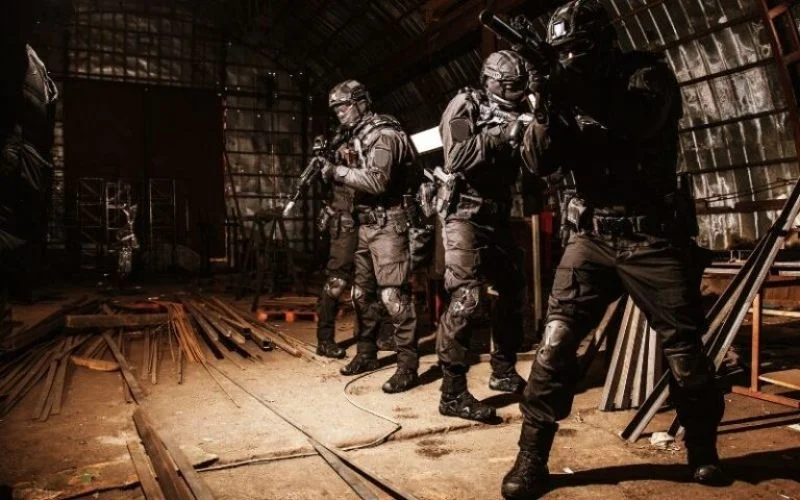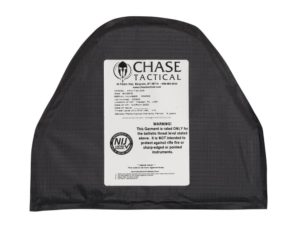Market Analysis: The Growth Of The Tactical Gear Industry

The tactical gear industry has seen remarkable growth in recent years, emerging as a significant segment within the civilian and military sectors. The demand for tactical gear has surged among law enforcement officers, outdoor enthusiasts, survivalists, and even fashion-forward consumers. This market, once limited to specialized military or police use, is now more mainstream than ever.
This in-depth analysis will examine the factors driving this growth, emerging trends, key players, and forecast the industry’s expansion.
What Is Tactical Gear?

Tactical gear includes equipment and apparel designed for military, law enforcement, and survival situations. This category typically includes:
- Apparel: Tactical vests, gloves, boots, and other tactical clothing.
- Accessories: Backpacks, belts, and holsters.
- Tools: Knives, flashlights, multi-tools, and weapon accessories.
- Survival Gear: First aid kits, hydration systems, and other emergency preparedness supplies.
Tactical Gear Market Growth Overview
The global market for military tactical gear was worth USD 14 billion in 2024. It is expected to grow at a rate of 6% each year. By 2032, the market is projected to reach USD 21 billion, according to Future Data Stats.
Let’s break down some primary factors contributing to this impressive market expansion.
1. Tactical Gear Market Size: Growth from 2018-2028
The global tactical gear market is estimated to grow from its initial valuation in 2018, reaching billions of dollars in sales volume by 2028. Both sales value and volume have witnessed a steady rise as tactical gear moves beyond traditional military and law enforcement usage and gains widespread civilian adoption.
Outdoor enthusiasts, self-defense advocates, and even fashion-conscious consumers are contributing to the demand for durable, high-performance gear. This surge in civilian interest, coupled with expanding government budgets, has led to robust tactical market expansion.
2. Market Trends And Dynamics: Key Drivers, Opportunities, and Risks
Several market dynamics are fueling the growth of the tactical gear industry.
- Increased Civilian Adoption: Consumers, particularly outdoor enthusiasts and survivalists, are investing in tactical gear for its practicality, durability, and versatility. Products like tactical backpacks, boots, and jackets have become essential for hiking, camping, and other outdoor activities.
- Technological Advancements: Integrating smart technologies, modular gear designs, and innovative materials has enhanced the quality and functionality of tactical products. These advancements are driving consumer interest and pushing the market forward.
- Rising Defense Budgets: Many governments worldwide are increasing their defense spending, creating opportunities for tactical gear manufacturers to supply high-quality gear to military and law enforcement agencies.
3. Macro-Economy And Regional Conflict: Impact of Global Events
Global economic conditions, such as inflation and the financial fallout from conflicts like the Russia-Ukraine war, have impacted the tactical gear market. Inflation has driven up the costs of raw materials, affecting pricing and profitability. Additionally, geopolitical tensions have heightened the demand for military gear and equipment, leading to increased orders from governments worldwide.
4. Segment Analysis: Tactical Gear By Type and Application
The tactical gear market can be segmented based on product types and applications. Products in the tactical gear market typically include apparel (body armor, gloves, boots), accessories (backpacks, belts, holsters), and tools (knives, multi-tools, flashlights). In recent years, tactical apparel has dominated the market in sales volume, largely due to its versatility across both professional and civilian use.
From an application perspective, the market can be divided into military, law enforcement, and civilian sectors. Military and law enforcement continue to be the primary consumers of tactical gear. Still, the civilian market is growing rapidly, driven by recreational activities, personal defense concerns, and tactical fashion trends.
5. Regional Market Analysis: North America, Asia Pacific, Europe, Latin America, Middle East, Africa
North America remains the largest market for tactical gear, thanks to the region’s high defense spending, the presence of key industry players, and the large number of outdoor enthusiasts and hobbyists adopting tactical gear. The United States is the dominant player, with a booming military-grade and civilian-use gear market.
Asia-Pacific is emerging as a high-growth region, driven by increasing military budgets, particularly in countries like China and India. This region also sees a rise in outdoor sports like trekking and airsoft, further driving demand.
Europe has also shown promising growth, partly due to rising defense budgets, particularly in Eastern Europe amid concerns over geopolitical tensions.
Other regions, such as Latin America, the Middle East, and Africa, are seeing moderate growth, with increased government spending on law enforcement and military modernization programs.
7. Country-Level Insights: Sales Volume In Key Markets
Several countries play a key role in driving the tactical gear market forward. The United States remains a major player, both in terms of domestic consumption and exports. China and India are rapidly growing Asian markets with high military equipment and outdoor gear demand market.
In Europe, countries like Germany and Poland are seeing an uptick in demand due to rising defense concerns. These markets are projected to contribute significantly to the global sales volume by 2028.
8. Trade Flow: Import And Export Trends
Trade flow analysis within the tactical gear market shows a significant increase in the import and export of tactical equipment, particularly in regions with growing military budgets. North America and Europe are prominent exporters of tactical gear, while Asia-Pacific and the Middle East are emerging as key importers.
9. Industry News, Policies, and Regulations
Government regulations and policies heavily influence the tactical gear market, particularly regarding product standards and export controls. For instance, in many countries, items like body armor and night vision devices are subject to strict regulations due to their potential military applications.
Recent industry news highlights innovations in material science, with manufacturers developing lighter, more durable gear that enhances protection and comfort. Additionally, governments worldwide are introducing new policies to modernize their military forces and law enforcement forces, which is expected to drive further demand.
10. Increase in Outdoor and Adventure Way of Life
One of the main drivers of the industry’s growth is the growing interest in outdoor pursuits and adventure lifestyles. Consumers are no longer seeking equipment but gear that delivers performance and reliability in harsh conditions. Companies such as Gear Patrol have provided expert guidance, enabling consumers to make informed decisions. As more people take up outdoor discovery, demand for tactical gear increases.
11. Rivals and Innovation within the Tactical Gear Market
Companies innovate continuously as the market increases, launching new accessories, gadgets, and gear to match consumers’ needs. The choice of what is out there has never been as diverse, from specialized outdoor goods to smartphones. The rivals compete in functionality, brand, and logo appearance to find their footing strongly within the marketplace.
With increasing demand, the tactical gear market is set for further success. Technology, lifestyle change, and rising consumer desire for high-quality, dependable products drive it.
Conclusion
The tactical gear industry is experiencing remarkable growth, driven by increasing demand for soldier protection, advanced warfare solutions, and enhanced communication systems. This expansion is driven by countries investing in advanced gear customization and combat equipment. As the market adapts to evolving mission requirements, there is a rising focus on flexibility, efficiency, and integration within various defense industry segments. The military tactical vest market trends, along with guns accessories market analysis and tactical headsets market anaylsis, show significant trends reflecting market shifts. However, the competition remains fierce, and businesses must align their strategy to overcome challenges and capitalize on emerging opportunities to strengthen their market share.
Frequently Asked Questions
How Have COVID-19 And The Russia- Ukraine War Affected The Tactical Gear Market?
COVID-19 and the Russia- Ukraine war have disrupted global supply chains and caused fluctuations in raw material prices, impacting the tactical gear market.
What Trends Shaping the Tactical Gear Market?
Current trends influencing the tactical gear market include:
- Advancements in technology.
- Increased demand for multifunctional gear.
- A growing focus on lightweight and durable materials.
What is driving the growth of the tactical gear industry?
The growth is fueled by rising demand for soldier protection, advancements in combat technology, and the integration of communication systems to improve mission effectiveness. Investment in gear customization and innovation plays a key role in addressing the unique needs of military personnel across different regions, including South Korea, Spain, and Mexico.
What challenges do companies face in the tactical gear market?
Companies must navigate competition, address evolving market threats, and strike a balance between customization and cost efficiency. Strategic research and investment in new solutions are essential for overcoming challenges and enhancing product features to meet the evolving needs of the defense industry.
How is the market share of military tactical vests evolving?
The military tactical vest market share is growing due to increasing demand for specialized protection and the ability to meet the complex mission requirements of military personnel. Trends suggest that customization, efficiency, and flexibility in design are becoming increasingly essential for capturing a larger portion of the market.


